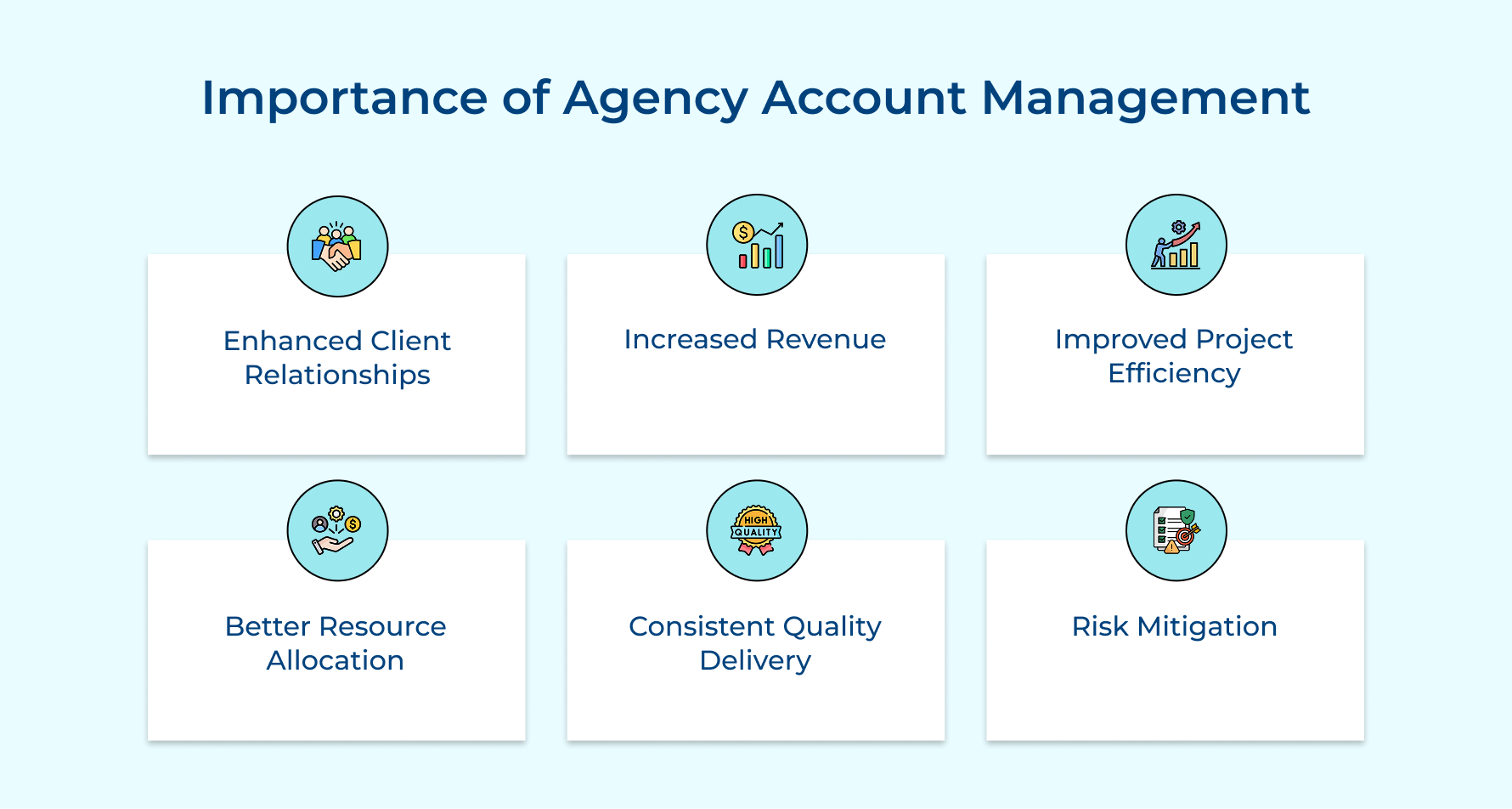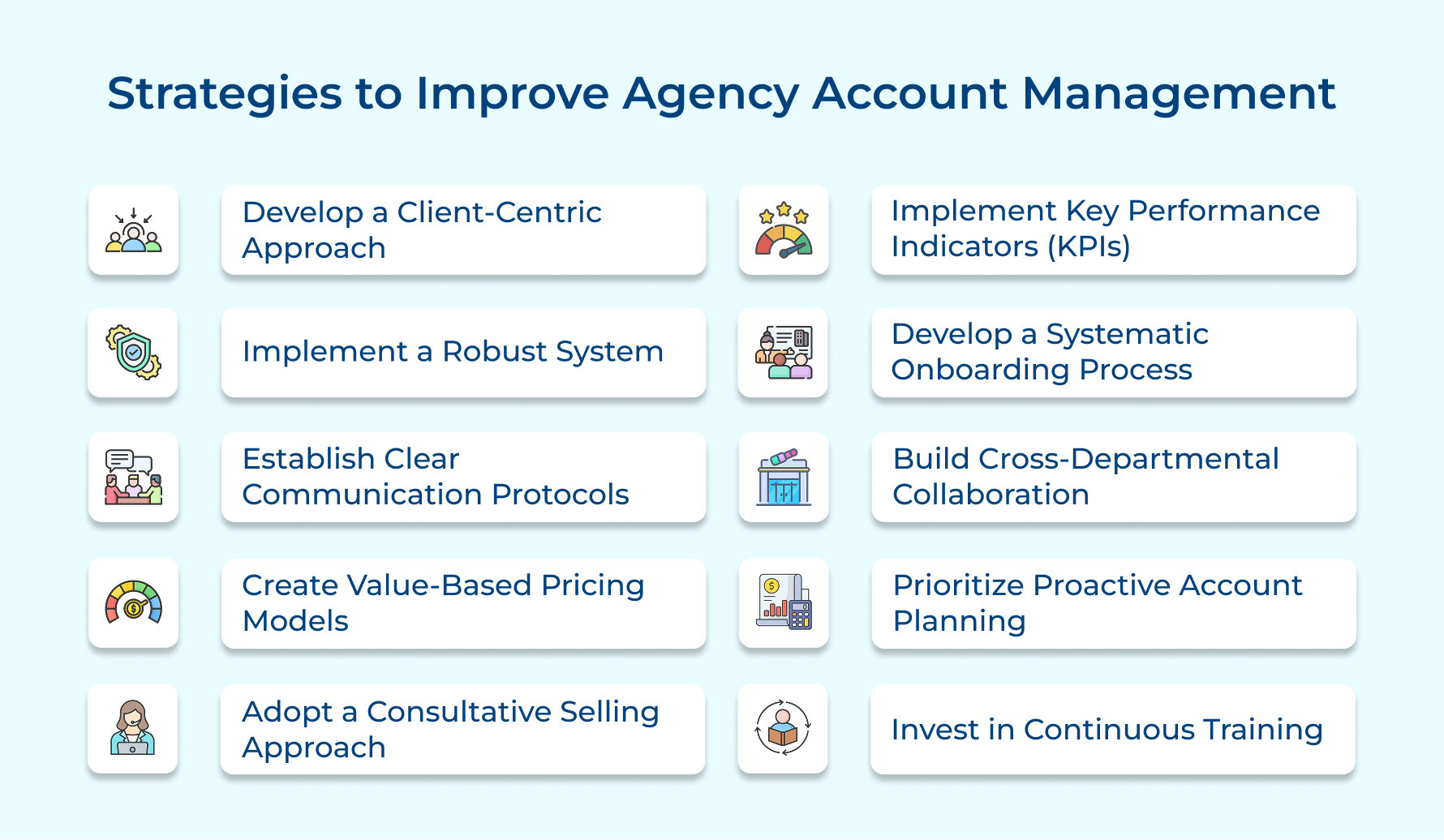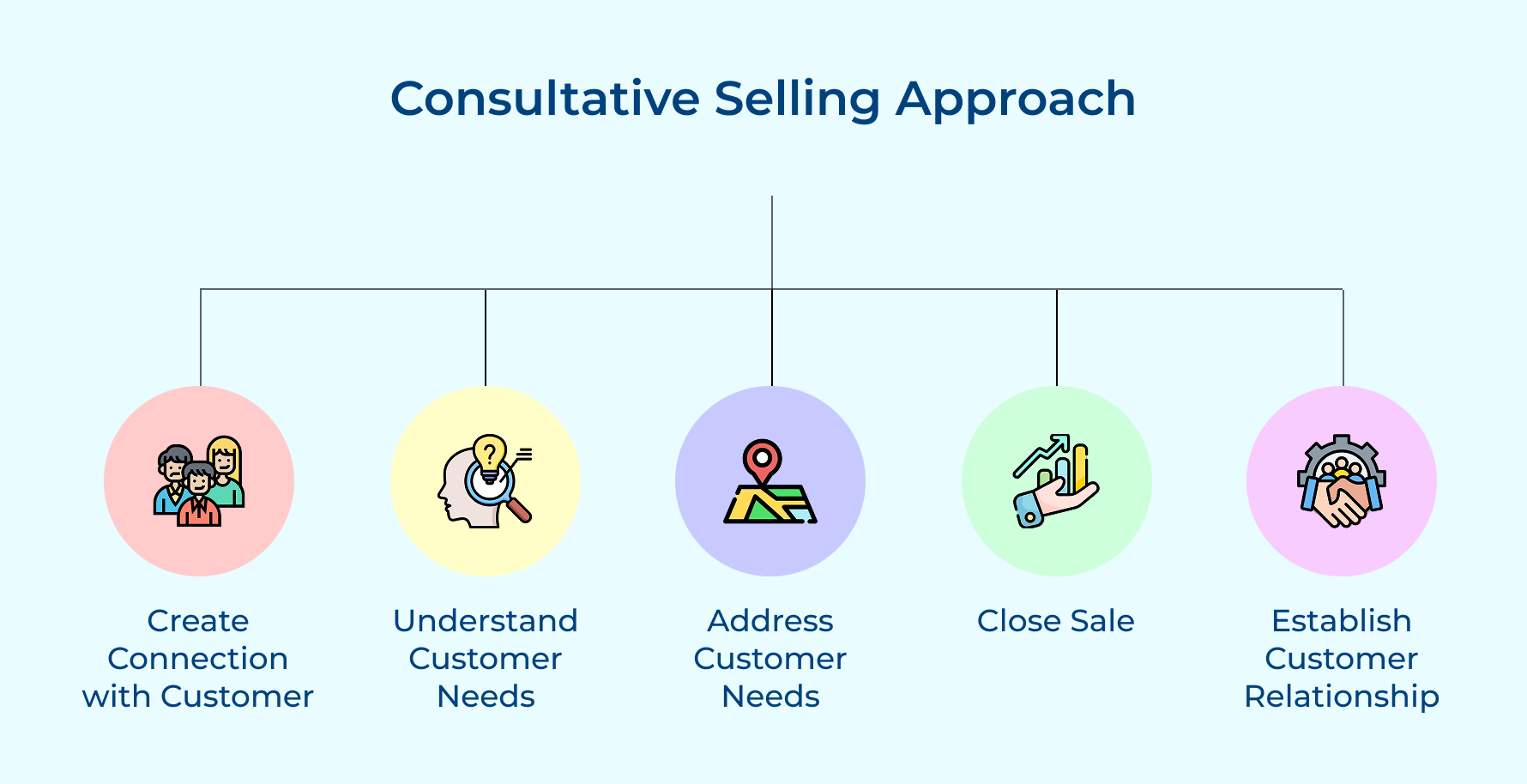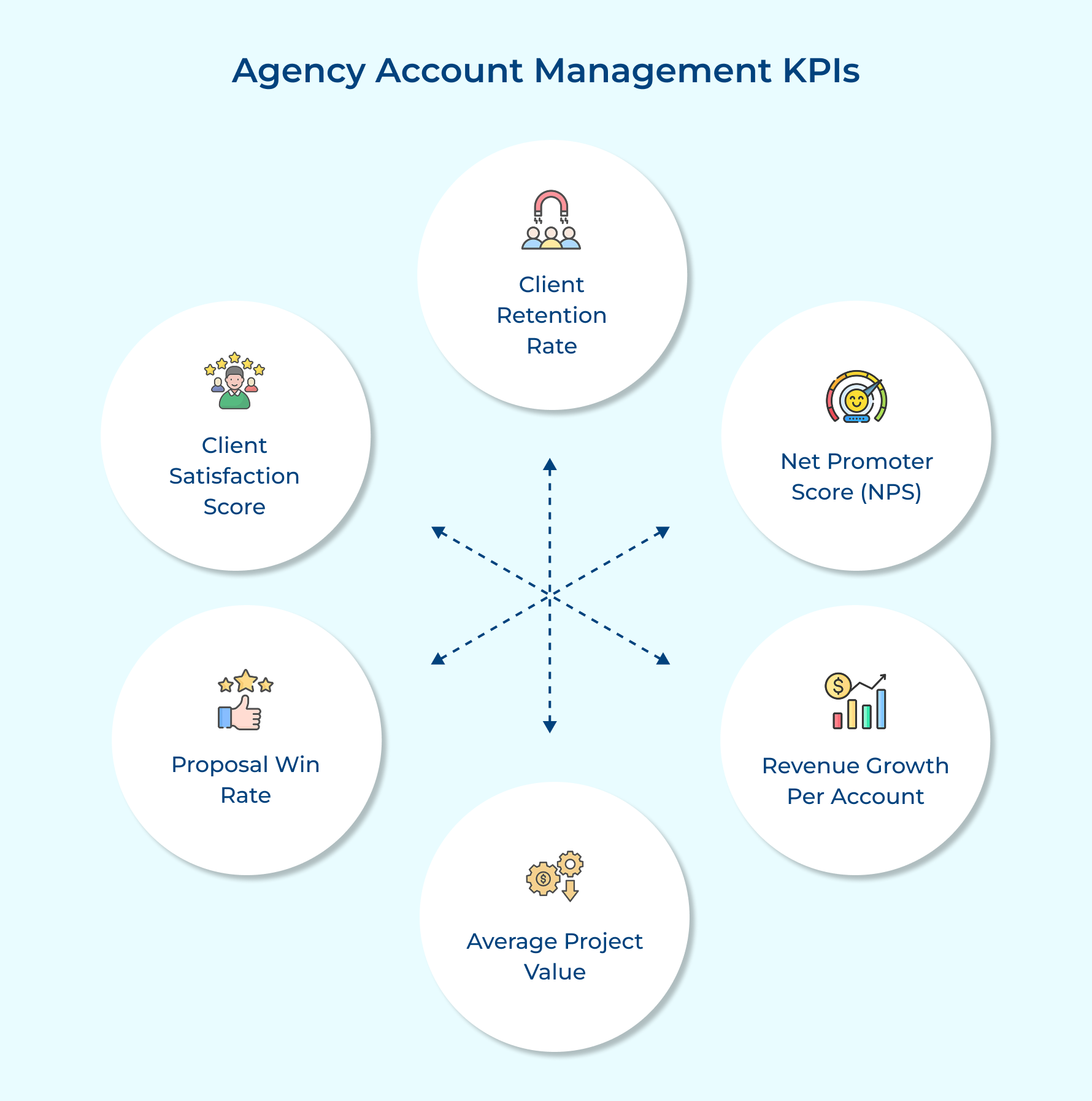What is Agency Account Management? Key Strategies & Tips

Key Highlights:
- Effective agency account management enhances client relationships, increasing revenue and long-term partnerships.
- Implement a client-centric approach by tailoring services and regularly gathering feedback.
- Track client retention rate to assess satisfaction and successful account management performance.
If you are an agency, professional services business, or consulting firm, you very well can understand that poor account management can lead to client dissatisfaction, lost revenue, and damaged reputation.
The Gallup Poll mentions how 40% of the B2B customers who are very satisfied are fully engaged with their agency account managers.
We’ll explore the critical components of successful agency account management, from building strong client relationships to leveraging technology for improved efficiency. Learn the essential skills, tools, and strategies that will transform your agency’s approach to client success with a strong data-driven approach.
What is Agency Account Management?
Agency account management refers to the strategic oversight and nurturing of client relationships within advertising, marketing, or creative agencies. It involves coordinating agency resources and understanding client needs while ensuring the delivery of high-quality services to maintain long-term partnerships. Successful agency account management requires a mix of strategic thinking, relationship building, and project management skills.
Key objectives:
- Translate client needs into actionable briefs for creative and production teams to deliver successful campaigns.
- Monitor project progress, manage expectations as well as ensure timely delivery of high-quality work within budget constraints.
- Identify opportunities for upselling/cross-selling agency services to expand client engagements and increase revenue.
Role and Responsibilities of an Agency Account Manager
Agency Account Manager is the main point of contact between clients and the agency, ultimately contributing to the agency’s success as well as profitability. They must continuously adapt to changing client needs, industry trends, and agency offerings to maintain a competitive edge.
Key responsibilities:
- Manage project timelines, budgets, and resources, coordinating with internal teams to ensure the successful completion of client projects on time.
- Pursue opportunities for upselling and cross-selling agency services, contributing to revenue growth along with client portfolio expansion.
- Act as the client’s advocate within the agency, communicating client feedback and requirements to internal teams, while ensuring that deliverables meet or exceed client expectations.
- Monitor project profitability, manage client budgets, and handle contract negotiations as well as renewals to maintain healthy financial relationships with clients.
Importance of Agency Account Management
Effective agency account management ensures there’s seamless communication between the client and the agency. Let’s delve into the other crucial aspects of its importance.
1. Enhanced client relationships: Account managers build strong, long-lasting partnerships with clients by serving as their primary point of contact. They build trust through consistent communication, understanding client needs, and advocating for their interests within the agency.
2. Increased revenue: Maintaining a close client relationship enables account managers to identify upselling and cross-selling opportunities. They’re well-positioned to recommend additional services that align with client goals that ultimately drive agency growth.
3. Improved project efficiency: Account managers coordinate between clients and internal teams, ensuring clear communication of project requirements. It streamlines workflows, reduces misunderstandings, and leads to more efficient project execution.
4. Better resource allocation: With a comprehensive understanding of client needs and agency capabilities, account managers can effectively allocate resources across projects. The optimization ensures that each client receives appropriate attention and that agency talent is utilized efficiently.
5. Consistent quality delivery: The account managers get to maintain high-quality standards across all deliverables by overseeing projects from inception to completion. They ensure that work aligns with client expectations and agency standards, contributing to overall client satisfaction.
6. Risk mitigation: Proactive account management helps identify potential issues early, allowing for timely intervention. Addressing concerns before they escalate protects both client interests and the agency’s reputation.
10 Key Strategies to Improve Agency Account Management
Improving agency account management requires a blend of effective communication and strategic thinking. Here are the key aspects to elevate client relationships and streamline projects.
1. Develop a Client-centric Approach
A client-centric approach is essential because it focuses on meeting client needs, leading to higher satisfaction, loyalty, and long-term partnerships. It differentiates your agency in a competitive market and drives sustainable growth.
Implement client-centric practices by conducting regular needs assessments, tailoring services to specific client goals, and continuously seeking feedback. Use this approach to inform strategy, service delivery, and relationship management across all client interactions.
Best practices:
- Conduct quarterly strategic reviews with clients to align agency efforts with evolving business objectives and market conditions.
- Maintain detailed client profiles that include not just business needs, but also communication preferences, company culture, and key stakeholders.
2. Implement a Robust System
A robust agency management software system centralizes client data, enhances communication, and provides valuable insights for decision-making. It improves efficiency, ensures consistent client experiences, and helps identify growth opportunities.
Use Agency management software like Kooper to track all client interactions, manage projects, forecast sales, and analyze client patterns. Leverage its features for targeted communication, opportunity tracking, and generating reports that inform strategic account management decisions.
Best practices:
- Ensure all team members are thoroughly trained on the Agency management software system. Establish clear guidelines for data entry and management to maintain data integrity.
- Regularly review Agency management software data and use automation features to streamline workflows. Trigger follow-up actions based on specific client behaviors or milestones.
3. Establish Clear Communication Protocols
Clear communication protocols are crucial for managing client expectations, ensuring timely responses, and maintaining transparency. They help build trust, reduce misunderstandings, as well as demonstrate professionalism in all client interactions.
Implement standardized communication practices across all client accounts, including response time expectations, preferred communication channels, and regular check-in schedules. Use these protocols to structure client interactions and internal team communications.
Best practices:
- Create a communication charter for each client, outlining preferred methods, frequency, and key contacts. Share this document with all team members involved in the account.
- Implement a traffic light system for urgent communications, clearly defining what constitutes a “red” (immediate action required) versus a “green” (standard response time) message.
4. Create Value-based Pricing Models
Value-based pricing aligns agency compensation with client outcomes, moving beyond time-based billing. It allows agencies to capture more value from high-impact work and incentivizes focusing on results rather than hours worked.
Develop pricing tiers or packages based on the value delivered to clients, such as expected ROI or impact on key business metrics. Use this model to have more strategic conversations with clients about objectives and outcomes.
Best practices:
- Conduct a thorough analysis of past projects to identify where the agency delivers the most value, and use these insights to structure value-based pricing tiers.
- Regularly adjust pricing models based on project outcomes and client feedback, ensuring continued alignment between value delivered as well as compensation received.
5. Adopt a Consultative Selling Approach
Consultative selling positions your agency as a strategic partner rather than just a service provider. It helps uncover deeper client needs, builds trust, and creates opportunities for more impactful engagements.
Train your sales and account management teams in consultative selling techniques. Use this approach in client meetings to ask probing questions, offer strategic insights, and propose comprehensive solutions that address underlying business challenges.
Best practices:
- Develop a set of diagnostic questions for each service offering to help uncover client pain points and opportunities during sales/strategy meetings.
- Create case studies as well as thought leadership content that demonstrates your agency’s strategic thinking and results-driven approach to share with clients.
6. Implement Key Performance Indicators (KPIs)
KPIs provide objective measures of account performance and agency value. They help justify investments, guide strategic decisions, and demonstrate the tangible impact of your agency’s work to clients.
Define clear, measurable KPIs for each account, aligned with client objectives. Regularly track and report on these metrics, using the data to inform account strategies, while identifying areas for improvement, while also showcasing success to clients.
Best practices:
- Collaborate with clients to establish mutually agreed-upon KPIs that directly tie to their business objectives, ensuring alignment on what constitutes success.
- Implement a dashboard system that provides real-time visibility into KPI performance for both internal teams and clients, promoting transparency while also enabling quick adjustments.
7. Develop a Systematic Onboarding Process
A systematic onboarding process ensures a smooth transition from sales to account management, sets clear expectations, and lays the foundation for a strong client relationship. It reduces early misunderstandings and accelerates time-to-value for new clients.
Create a standardized onboarding checklist and timeline for all new clients. Use this process to gather essential information, introduce key team members, establish communication protocols, and align on goals.
Best practices:
- Conduct a comprehensive kickoff meeting involving all key stakeholders from both the agency and client side to ensure alignment on objectives, timelines, deliverables, etc.
- Create a detailed “client bible” for each new account, documenting all relevant information, preferences, and historical context to ensure consistency in service delivery.
8. Build Cross-Departmental Collaboration
Cross-departmental collaboration ensures all aspects of client work are aligned and leverage diverse expertise. It leads to more innovative solutions, improved efficiency, and a more cohesive client experience.
Implement regular cross-functional meetings and collaborative tools to facilitate information sharing. Encourage joint problem-solving sessions and ensure all departments have visibility into client objectives as well as project progress.
Best practices:
- Implement a project kickoff process that involves representatives from all relevant departments to ensure diverse perspectives are considered from the outset.
- Create cross-functional teams for key accounts, with clear roles and responsibilities to encourage collaboration including mutual accountability.
9. Prioritize Proactive Account Planning
Proactive account planning anticipates client needs, identifies growth opportunities, and mitigates potential issues before they arise. It demonstrates strategic value to clients and positions the agency as a forward-thinking partner.
Develop comprehensive, long-term strategic plans for each key account. Regularly update these plans, considering market trends, client business objectives, and potential areas for service expansion.
Best practices:
- Conduct annual strategic planning sessions with key clients to align on long-term goals and develop a roadmap for achieving them.
- Implement a quarterly account review process within the agency to assess progress and identify risks/opportunities, while adjusting strategies accordingly.
10. Invest in Continuous Training
Continuous training ensures your team stays current with industry trends, technologies, and best practices. It enhances the quality of work, improves problem-solving capabilities, and increases the value your agency can offer to clients.
Implement a structured training program covering both technical skills and soft skills. Use a mix of internal knowledge sharing, external workshops, and online courses to keep your team’s skills sharp as well as relevant.
Best practices:
- Create individual development plans for each team member, aligning their growth with both personal career goals and agency needs.
- Implement a mentorship program pairing junior staff with experienced team members to facilitate knowledge transfer and build a culture of continuous learning.
How to Measure Agency Sales & Account Management Successfully
Want to know if your agency’s sales and account management are on the right track? Let’s dive into some simple ways to measure success.
1. Client Retention Rate
Measure the percentage of clients who continue to work with your agency year-over-year. A high retention rate indicates strong client satisfaction and effective account management.
2. Net Promoter Score (NPS)
Gauge client loyalty and satisfaction by asking how likely they are to recommend your agency. This metric provides insights into overall client sentiment and potential for referrals.
3. Revenue Growth per Account
Track the increase in revenue from existing clients over time. The KPI reflects the effectiveness of upselling and cross-selling efforts, as well as the value clients perceive in your services.
4. Average Project Value
Monitor the average monetary value of projects or retainers. An upward trend suggests the successful positioning of higher-value services and strategic account growth.
5. Proposal Win Rate
Calculate the percentage of proposals that result in new business or expanded services for existing clients. This metric indicates the effectiveness of your sales and account management teams in understanding as well as meeting client needs.
6. Client Satisfaction Score
Regularly survey clients on their satisfaction with your agency’s services, communication, and results. It offers a quantifiable measure of client happiness and areas for improvement.
Master Agency Account Management with Kooper
Successful agency account management is fundamentally about the synergy between people, processes, and tools. The right team, equipped with the necessary skills as well as expertise, forms the foundation of effective client relationships and strategic decision-making. This trifecta is inextricably linked to an agency’s profitability, client retention, and sustainable growth.
When account managers are equipped with the right skills and resources, they can nurture stronger client relationships, as well as identify upselling opportunities, while also delivering consistently high-quality work. Agency management platforms like Kooper can significantly accelerate this synergy by centralizing client information, automating routine tasks, and providing real-time insights.
Neeti Singh is a passionate content writer at Kooper, where he transforms complex concepts into clear, engaging and actionable content. With a keen eye for detail and a love for technology, Tushar Joshi crafts blog posts, guides and articles that help readers navigate the fast-evolving world of software solutions.
Limit time — not creativity
Everything you need for customer support, marketing & sales.



